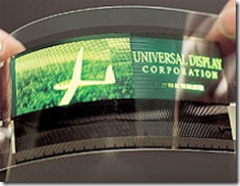Researchers at a Canadian startup say they've found a way to make low-cost, white-light LEDs that could one day end our addiction to inefficient incandescent bulbs. They claim to have cracked the cost barrier for solid-state lighting by replacing the expensive semiconductors compounds traditionally used in LEDs with low-cost silicon.
"Because it's a silicon-based system, we think [the lighting] will be affordable," says Stephen Naor, chief executive officer of Ottawa-based Group IV Semiconductor (named after silicon's position in the periodic table). "That's critical, because if you don't have affordability, then nobody is going to buy it."
Roughly 60 percent of all lightbulbs in the world are still incandescent--and for good reason: most cost pennies to produce. However, 95 percent of the energy used by these bulbs is wasted as heat. Solid-state lighting is already widely used for specialty applications; LEDs on Christmas tree lights, for example, are based on gallium nitride semiconductors. And experts predict that this technology will be increasingly used for general lighting purposes (see "Turning on LEDs").
But making LEDs using semiconductors based on gallium nitride requires costly manufacturing processes. "The problem is you're using alloys, and there are always impurities. So you have to grow them using very sophisticated gear under ultrahigh vacuum equipment. It's a very costly process," says Sylvain Charbonneau, professor of physics at the University of Ottawa and director of applications technologies at the National Research Council of Canada. Charbonneau is also director of the Canadian Photonics Fabrication Centre, which Group IV will be using to design a prototype of its technology.
Moreover, semiconductors such as gallium nitride are more expensive than silicon, one of the most abundant elements on the planet. Silicon already has a trillion-dollar infrastructure built around it, to support the global electronics industry, and its properties are well researched and thoroughly understood.
"Silicon for electronics is like carbon for organic chemistry," says Moungi Bawendi, professor of chemistry at MIT and an expert on semiconductor nanomaterials. "It's sand--you can't get better than that, so you certainly have a cost advantage if you can base [an LED semiconductor] on silicon."
There's one catch, though: silicon is poor at emitting light. To overcome this, Group IV fabricated a structure in which an electrical current is passed between the top transparent layer of the device and a substrate made of silicon. In-between these two layers is a layer of silicon nanocrystals--quantum dots--that emits the light. When current is applied, the nanocrystal's electrons are energized; once they settle back into their natural state, energy is given off in the form of photons, producing light.
"The final product would definitely compete head-to-head with [conventional] LEDs, but the way of generating the light at the atomic level would be different," explains Ottawa's Charbonneau. "The technology they use is novel."
CEO Naor says Group IV's silicon-based light chips could use up to 90 percent less energy than incandescent bulbs and last up to 50 times longer. He adds that the ultimate goal is to have brighter, higher quality light at far less cost than conventional LEDs, which today can run around $40 for bulbs containing a cluster of 36 LEDs. "You can build an LED lightbulb out of many LEDs," he explains. "But we anticipate one [silicon-based] chip will be bright enough to replace a 100-watt lightbulb, so in that sense we're brighter. And that one chip has huge cost benefits."
But Naor concedes that Group IV's technology is not yet ready to take on conventional LEDs. "We have a lot of work ahead to get brighter, to get it to the efficiency we're targeting, and of course to get the lifetimes that the industry is expecting."
Meanwhile, the traditional LED market isn't standing still. San Jose, CA-based Philips Lumileds Lighting, the world's largest manufacturer of high-powered LEDs, continues to roll out products. The Optoelectronics Industry Development Association estimates that the mass substitution of incandescent lighting with LEDs could happen by 2012, while significant displacement of fluorescent technology would follow several years later.
Whether Group IV can catch up with its competition is not clear; but, after four years of research, the company is ready to move its technology into prototype and product development. "The target is to have a demonstration ability--meaning a real lightbulb--three years from now," says Naor, adding that he'd like to see a product in the marketplace within five years that can be price-competitive with today's compact fluorescents. "It's what people are willing to pay. It's difficult to be precise on where we'll be on price three or four years away, but we're very comfortable we'll be in the ballpark," he says.
Canadian natural gas giant EnCana Corp. and the federal granting agency Sustainable Development Technology Canada together have contributed $4.6 million (Canadian) toward the company's effort. And Vinod Khosla, through his Silicon Valley venture capital firm Khosla Ventures, is also an investor.
But MIT's Bawendi says Group IV may have a tough time meeting its schedule. "Three years sounds awfully fast; but I don't know where they're starting from. The challenge for them is one of efficiencies; they must get their efficiencies high and costs way down."
At stake is access to the world's $12-billion lightbulb market. "Clearly solid-state white lighting is something that has many potential opportunities," adds Bawendi. "It's a huge market, so anybody who can get a little piece of it can do well."
Source : Technology Review
 Mardi, les responsables australiens ont annoncé leur intention de remplacer à terme les ampoules à incandescence par des ampoules à néon dans le pays.
Mardi, les responsables australiens ont annoncé leur intention de remplacer à terme les ampoules à incandescence par des ampoules à néon dans le pays.
 Here is enclosed a link toward
Here is enclosed a link toward